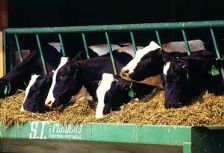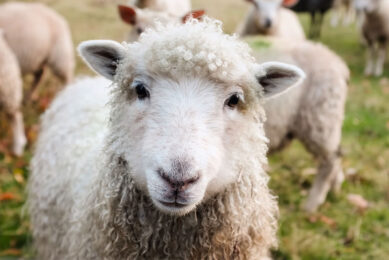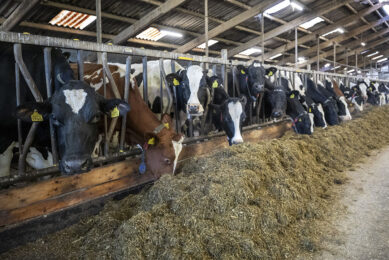Natural plant extracts can reduce dairy farm odours and feed costs

Adding natural plant extracts to cow feed can reduce levels of gas emmissions by one-third while also reducing the need to fortify cow feed with expensive protein supplements. This is according to scientists at the recent 242nd National Meeting of Exposition of the American Cemical Society (ACS).
Three studies were carried out to determine how adding plant substances called "tannins" to cow feed affects the emission of ammonia from dairy barn floors and farm fields fertilized with mixtures of cow manure and urine.
"For dairy farms, cow urine is the source of the ammonia emission problem," said J. Mark Powell, Ph.D., who is with the U.S. Department of Agriculture (USDA) Agricultural Research Service (ARS). "Dairy cows excrete large amounts of urine, about 3.5 gallons daily for each cow. That’s almost 1,300 gallons per year. And there are about 10 million dairy cows in the United States alone. Cows usually are fed a high-protein diet, and they produce various nitrogen compounds when they digest protein. They release the excess nitrogen mainly in their urine, and enzymes convert it into ammonia."
Several months ago citizens’ groups several petitioned the US Environmental Protection Agency (EPA) to start regulating ammonia under the Clean Air Act, intensifying the search for practical, inexpensive ways to reduce emissions of the noxious gas. Ammonia has an acrid, eye-tearing odour and has potential adverse health effects on both cows and humans. It also contributes to air pollution, forming particles that travel long distances and contribute to environmental issues such as smog, acid rain and nutrient pollution.
The ammonia problem originates with the nitrogen-rich protein in cow feed. Cows’ digestive systems are inefficient, and barely one-third of the nitrogen in their feed ends up in milk. The rest exits in urine and faeces. The nitrogen in urine is in the form of urea, and enzymes contained in cow manure on the barn floor quickly convert it into ammonia gas.
Tannins apparently reduce urea production by allowing more protein to escape digestion in the stomach and enter the cow’s intestines, where it’s used to produce milk protein.
Powell began investigating tannins in animal feed 20 years ago in West African communities where he lived and worked. Tannin-rich shrubs were grown as windbreaks to reduce soil erosion and to feed livestock. Tannins also are a key part of the diets of cattle, sheep and goats in tropical areas where vegetation tends to be naturally higher in the astringent plant chemicals. However, tannins have attracted relatively little attention elsewhere, Powell said.
He hopes the addition of tannins to animal feed will become much more widespread in light of the findings about their potential for curbing ammonia emissions. The tannin extracts used in the studies are already approved for animal feed and would cost only a few cents a day, he said. Tannins are perhaps best known for their use in tanning leather, and the quebracho and chestnut trees are sources for both leather tanning and cattle feed. Powell said that it may be possible to produce synthetic tannins at a lower cost.
Next on Powell’s agenda is research to determine whether tannins also can reduce emissions of methane gas — a potent greenhouse gas involved in global warming — from cattle production. About 25% of methane emissions in the United States are from enteric fermentation (mostly belches) of domestic cattle.
Join 26,000+ subscribers
Subscribe to our newsletter to stay updated about all the need-to-know content in the feed sector, three times a week. Beheer
Beheer









 WP Admin
WP Admin  Bewerk bericht
Bewerk bericht